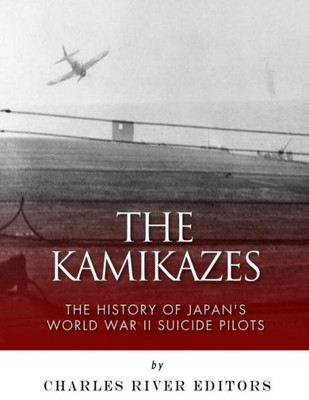*Includes pictures *Includes diary entries and other accounts written by kamikaze pilots *Includes a bibliography for further reading One of the most fascinating aspects of World War II was Japan''s use of suicide pilots known around the globe as kamikazes, though the Japanese referred to them as Tokubetsu kogekitai ("Special Attack Units"). Translated as "God Wind," "Divine Wind" and "God Spirit," kamikazes would sink 47 Allied vessels and damage over 300 by the end of the war, but the rise in the use of kamikaze attacks was evidence of the loss of Japan''s air superiority and its waning industrial might. This method of fighting would become more common by the time Iwo Jima was fought over in early 1945, and it was especially prevalent during the invasion of Okinawa in April 1945. The "privilege" of being selected as a kamikaze pilot played directly into the deep-seated Japanese mindset of "death before defeat." The pilot training manual assured each kamikaze candidate that when they eliminated all thoughts of life and death, fear of losing the earthly life can be easily overcome. Still, not all cases of those chosen to be kamikazes were equally noble. Recruits were trained with torturous regimens or corporal punishment, and stories of mental impairment caused by drugs or saki abound. Some were described as "tottering" and dazed, being carried to their planes by maintenance officers, and forcibly pushed in if they backed down. Pilots who could not find their targets were told to turn around and spare their own lives for another day, but if a pilot returned nine times, he was to be shot. At the moment of collision, he was instructed to keep his eyes open at all times, and to shout "Hissatsu" ("clear kill"). Altogether, nearly 4,000 kamikaze pilots died in combat between October 1944 and August 1945, and about one in seven managed to hit his target. At their peak, they did far more damage to the American Navy than did conventional air attacks, and they undoubtedly placed a significant new obstacle in the path of the American forces slowly encircling the Japanese home islands. However, the widespread use of kamikaze tactics darkened and hardened attitudes toward Japan within the American military and helped to set the stage for the total war on Japanese civilians that the American military waged in the closing months of the war. The Marine Corps Gazette noted, "The ruthless atrocities by the Japanese throughout the war had already brought on an altered behavior (deemed so by traditional standards) by many Americans resulting in the desecration of Japanese remains, but the Japanese tactic of using the Okinawan people as human shields brought about a new aspect of terror and torment to the psychological capacity of the Americans." As one sailor aboard the USS Miami recalled about kamikaze attacks at Okinawa, "They came in swarms from all directions. The barrels of our ship''s guns got so hot we had to use firehoses to cool them down." The kamikazes were the most effective weapon the Japanese had in terms of sinking ships, but they only appeared in the final year of the war. The fact that Japan''s military leadership concluded it was both necessary and justified to establish special units of pilots trained to sacrifice their own lives by crashing their planes into enemy vessels was a mark of their own desperation. In the heat of battle, individual soldiers occasionally risked certain or near-certain death to protect their comrades or advance their mission, but organized unites devoted to suicide tactics were virtually unknown before 1944. They appeared only once the course of the war had turned decidedly against the Japanese. The Kamikazes chronicles the history of Japan''s famous suicide pilots and explains when, why, and how Japan resorted to their use near the end of war. Along with pictures of important people, places, and events, you will learn about the kamikazes like never before.
- | Author: Charles River Charles River Editors
- | Publisher: Createspace Independent Publishing Platform
- | Publication Date: Feb 24, 2018
- | Number of Pages: 78 pages
- | Language: English
- | Binding: Paperback
- | ISBN-10: 1985646366
- | ISBN-13: 9781985646360







